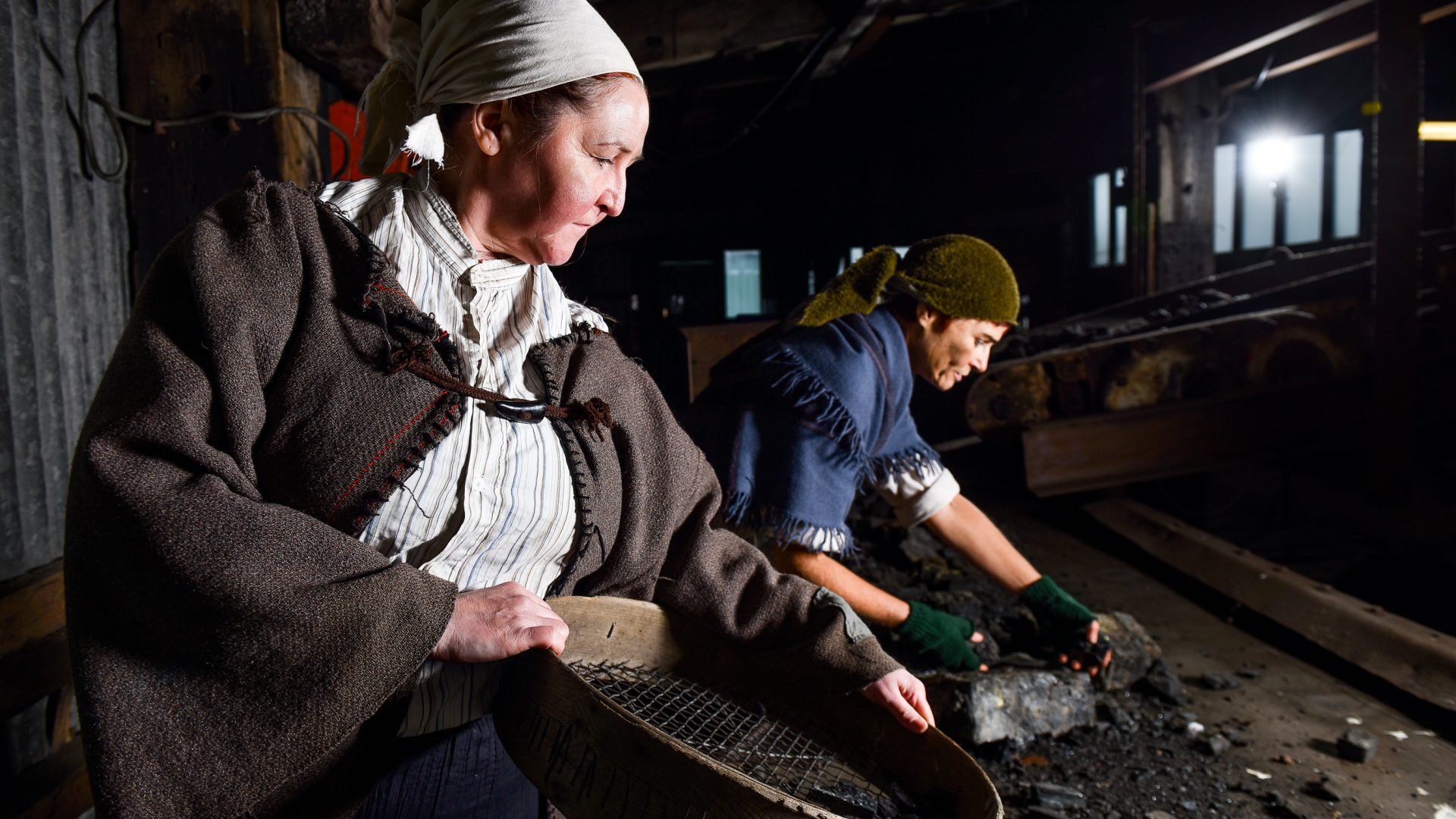Voices in the Coalshed: Skreens or Screens

In the early days of mining, when miners were only paid for the weight of coal they hewed, workers underground sorted coal from waste materials as it was passed over a skreen (yes, at that time spelled with a K) on its way to the wagons; this ensured that only coal made its way to the surface.
Once the wagons reached the pit top the coal was weighed then taken into makeshift sheds where it was sorted by hand; this was done mostly by the women who, after the 1842 Act of Parliament, could no longer work underground. Boys too worked here until they were old enough to be employed in the mine itself.
Here at Caphouse, a special temporary building, called the screens because it replaced those early skreens which had been used underground, was constructed. The building is made of timber clad in corrugated iron.
To begin with, the wagons were tipped and the coal was sorted by hand. This changed when an upper floor was added to the building, allowing a “tippler” to be installed which tipped the tubs automatically. They still had to be weighed beforehand though. In the screens the coal was sorted for two reasons: firstly, to remove waste as before and secondly into different sizes depending on its intended use, for example: domestic fuel, railways, power stations etcetera. Other screens made this process easier.
There is an office in the screens where the amount of coal in each tub was recorded so that payment could be made.